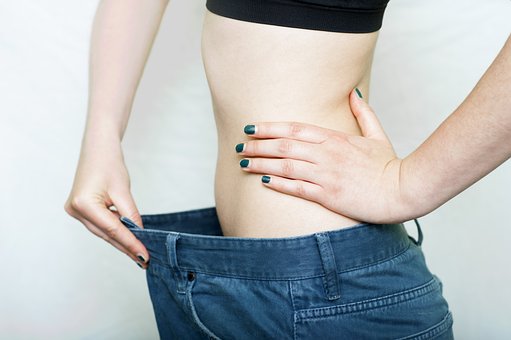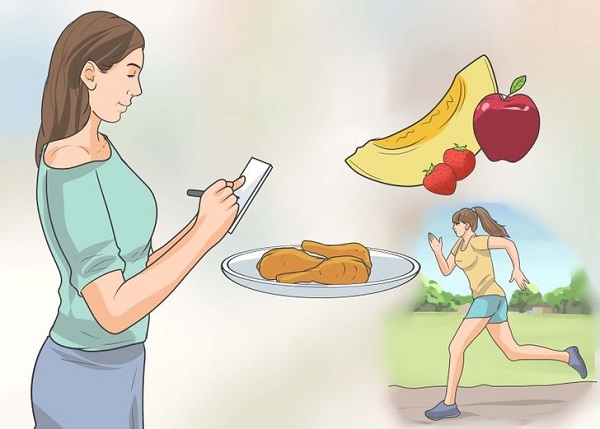Weight loss is a popular topic when it comes to health and fitness, but keeping a healthy body composition is just as important for maintaining a healthy lifestyle.
The goals of your fitness plan should be centered around your body composition. Whether you want to have a bikini body for your beach vacation, or stay active and fit in your golden years.
Body composition based weight loss plans produce visible and reliable results that last. Body composition refers to what your body is made of in terms of the ratios of fat, water, muscle, and bone in your body.
It tells you the percentage of fat compared to fat-free mass (lean muscle mass, bones & water). Simply put, it is Muscle Vs. Fat. Any two people can have the same bodyweight or height, but no two people can have the same body composition.
Two people could have the same body weight, but different percentages of fat and muscle.
The Game-Changer
Contrary to popular belief, it is not fat or carbs that are the real game-changers when it comes to weight loss, but rather “lean body mass“. Lean body mass is the term for the weight of your bones, organs, and muscles. Why is it so important? Because it works when you are not working out!
Muscle tissue is biologically more active when you are sitting, which means it is utilizing energy. If you have more lean body mass, you have a higher BMR. It is easier to maintain a healthy weight with a higher metabolism.
Athletes and bodybuilders have a higher percentage of lean body mass than the average person. This is due to the demands of their sport and workout regimens. If you want long-lasting results, you should focus on building muscles instead of worrying about fat.
Strength training can help improve your energy and mood levels. It can also help you feel stronger and fitter. Doesn’t everyone like the feel of having strong, toned muscles?
Fit and Strong
Is your weight decreasing but your inches are not? Is your weight increasing but inches are the same? Are you gaining inches but not weight? You’re probably more focused on being skinny than having a healthy body composition.
You can’t achieve an arbitrary “skinny” goal without understanding your body type, any more than you can win a race without a finish line or a prize.
You will reach nowhere. Learning your body type will help you better design your fitness and eating plan so you’re more likely to see results than if you just ran aimlessly trying to lose weight.
If you want to change your body composition, you can do so by gaining muscle mass or losing fat. These four factors are key in changing your body composition.
You can build more muscle mass and burn fat by working out (cardio, strength and functional training) and eating a healthy diet.
It is important to follow a healthy and sustainable weight management plan that is not based on deprivation or starvation. You can’t win against your natural instinct, which is hunger. You cannot avoid the issue if you want to achieve long-term fat loss.
Kick Start Your Weight Loss Journey
Sleep
Sleep is the time when our body can repair itself, become rejuvenated, and recharge. Your stress hormones go on a free ride when you don’t get enough sleep, causing mood swings, food cravings, and weight gain.
If you don’t sleep well, your body won’t release fat. Set a sleep clock. At least you fix your sleep timing. Our body works well discipline everyday. The ideal amount of sleep is 7-9 hours.
Food Timings
Fat loss depends on certain hormones, too. These hormones are leptin, ghrelin and insulin. If you are not fixing your food timings, then you will not be able to lose weight as easily.
This can also lead to fat gain. Follow the 2-6-12 formula for your meals. You should eat breakfast within 2 hours of waking up, lunch within 6 hours of waking up, and dinner within 12 hours of waking up. If you want to sleep well, you should have a three hour gap between dinner and bedtime.
Appetite
Weight management is not complete without also managing your appetite, or understanding your appetite. Our bodies give us signals, and hunger is one of those signals. Ignoring or suppressing hunger is not advisable.
You should be aware of everyone’s different hunger timings and eat accordingly. Be in sync with it.
Activity
This rule is simple – eat when you are more active and don’t eat when you are not active. You can eat before working out, because you’ll end up using all those calories. But it’s best to avoid eating close to bedtime.
Easy Weight Loss Tips
Stay Hydrated
The body’s physiological response to dehydration is binge eating. When you are dehydrated, you feel hungrier.
You should drink water between meals to keep your body hydrated. While 2 liters of water may sound like a reasonable amount, it is best to drink water when you feel thirsty.
Say Hello to Veggies
Vegetables contain all the nutrients your body needs to function properly on a daily basis. Vegetables help the body by cutting free radicals and promoting satiety. including vegetables with each meal can help with controlling hunger and cravings for unhealthy foods.
Eat Clean
Eating healthy is the simplest way to manage your weight. Say no to all kinds of refined food ingredients. For example, even if an ingredient looks healthy, like instant oats or wheat noodles, if it is refined, it is not clean or nutritious.
Eat What You Love
Instead of feeling guilty about eating what we love, let’s just enjoy it. Demonizing certain food items is of no help. It is better to eat your favorite food once so that you can get over the craving.
Deprivation can lead to overeating and erratic eat timings, so it’s important to overcome it. Balance and planning is one way to do it.
For example – if your favorite food is something fried then have it as a mid-meal or if it is sweet then do some extra workout or if it is rich in calories, then go for a lighter dinner.
Start Moving
If you want to improve your fitness, you need to be working out for more than a couple of hours each day. You have to stay active throughout the day. If you are sitting for 30 minutes, you are encouraged to move for one minute.
If you sit for long periods of time, your body will start to remember this position and lose muscle mass in the affected area. Additionally, you will start to gain fat in these areas. Also, less activity is equal to less muscle mass.
Extra Tips for Losing Weight
Eat Regular Meals
You can burn calories at a faster rate and avoid becoming too hungry by doing this. It can help regulate the hormones involved in controlling appetite.
It can help you better stick to a routine, avoid temptation, and develop better self-control.
Eat breakfast. If you eat breakfast, it will help regulate your blood sugar, give your metabolism a boost, and stop you from snacking or eating on impulse later in the day.
It has also been linked with stimulating your metabolism and giving you more energy throughout the day. Some good options for a healthy breakfast are unsweetened cereal, a boiled egg, and a slice of wholemeal toast.
Make sure each meal is balanced. Be mindful of what you’re eating at each meal. A minimum of half your plate should be covered with fruits and/or vegetables. One fourth of the plate should be made up of meat, fish, beans, or other protein sources.
If you’re not limiting your carbs, then 1/4 of your plate should contain complex carbs like brown rice, potatoes, or bread.
A well balanced meal will help ensure you’re getting all the nutrients you need while also keeping your blood sugar levels stable and satisfying your hunger.
Dessert is not an essential part of a well-balanced meal. It is a treat.
Don’t let yourself get too hungry. If you go for long periods without eating, you may end up eating more when you do eat and crave unhealthy snacks. Eating every 3-4 hours will help to prevent this.
Plan What You Eat
It is important to plan ahead. Would it be possible for you to plan each day’s meals and recipes in advance, or plan a week’s worth of meals at once? You will know exactly how much food you will be eating if you do it this way.
I prefer this method to looking in the cupboard and fridge to see what is available to eat before mealtimes or snacks.
It is best to separate eating from other activities. This allows you to stick to your planned diet for the day. Don’t eat while you’re busy doing other things like walking, watching TV, or attending meetings.
Change Your Eating Habits
Do you have any eating habits that can improve?
- Are you eating larger and larger portions when you have a meal? Deliberately try to take smaller portions when you have a meal. Do not feel that you have to empty your plate. Perhaps change the plates in your cupboard (which may be large) to more medium-sized plates. In this way you will naturally serve up smaller portions.
- Do you need to snack? What do you have for snacks? Try changing chocolates, cakes or crisps for fruit or avoid snacking altogether if you think you may just do it out of habit.
- Do you have second helpings at mealtimes when you are really already full?
- Skipping meals is usually a bad idea. It sounds a good idea but many people just become hungry, have snacks later in the day and eat too much at the next meal. Eating at regular mealtimes may be a first important change. It is best to have three healthy meals a day.
- Do you always have a pudding? Will a light yoghurt do instead of a sweet pastry? Or maybe you aren’t actually hungry for a pudding and eat it out of habit or because it tastes good?
- Do you eat quickly? Are you ready for a second helping before most people have half finished their first plateful? Overweight people, on average, eat faster than slimmer people. It is best to train yourself to chew each mouthful for longer and to eat slowly.
- Do you give yourself time to feel full? It takes 15-20 minutes for the brain to register that you feel full. The hormones that regulate your appetite need time to kick in. So, eating slowly and allowing yourself time to feel full can help you to lose weight.
- Do you watch TV while you are eating? Sometimes having distractions and not concentrating on mealtimes can cause you to overeat. Sit down at the table during meals, focus on what you are eating, taste the food and become more aware of your food and eating habits.
Change The Food You Buy
To improve your eating habits, start by changing what you put in your shopping cart. If you want to avoid temptation, don’t buy things like biscuits and sweets.
If you want to be effective when you go shopping, it may help to create a list of the items you need before you go, and then stick to that list.
When you are trying to figure out which foods are healthier, it can be helpful to spend some time looking at food labels to help you make a decision about what to buy.
Some tips to follow would be to not go grocery shopping when you are hungry as you are more likely to impulse buy. The best time to go shopping would be after you have had a meal. Remove temptations by changing the contents of your cupboards.
Consider Eating More Soup
Some evidence suggests that soup could make you feel fuller for longer. If you have soup as a starter to your meal, you are less likely to overeat for the rest of your meal.
Blending food with water to make a soup can help to stave off hunger for longer.
The reason soup makes you feel fuller for longer is because it takes your stomach longer to empty when you eat soup than if you ate chicken and vegetables and drank water separately.
This stretching of your stomach wall and the consequent sending of messages to your brain prevents you from feeling hunger for a longer period of time.
To lose weight, it is important to eat a soup that is low in calories. Avoid creamy or high-calorie soups.
Purium’s Ultimate Transformation can reset your body in just 30 days!
Kick off your weight loss journey by hitting the reset button on your metabolism and get the fat BURNING! Scientifically designed to burn stored body fat, the Ultimate Lifestyle Transformation gives you the power.
-
Burns fat and builds muscle
-
Helps the body break addictions to harmful foods
-
Resets metabolism and boosts the skinny hormone (adiponectin) for continued weight loss









